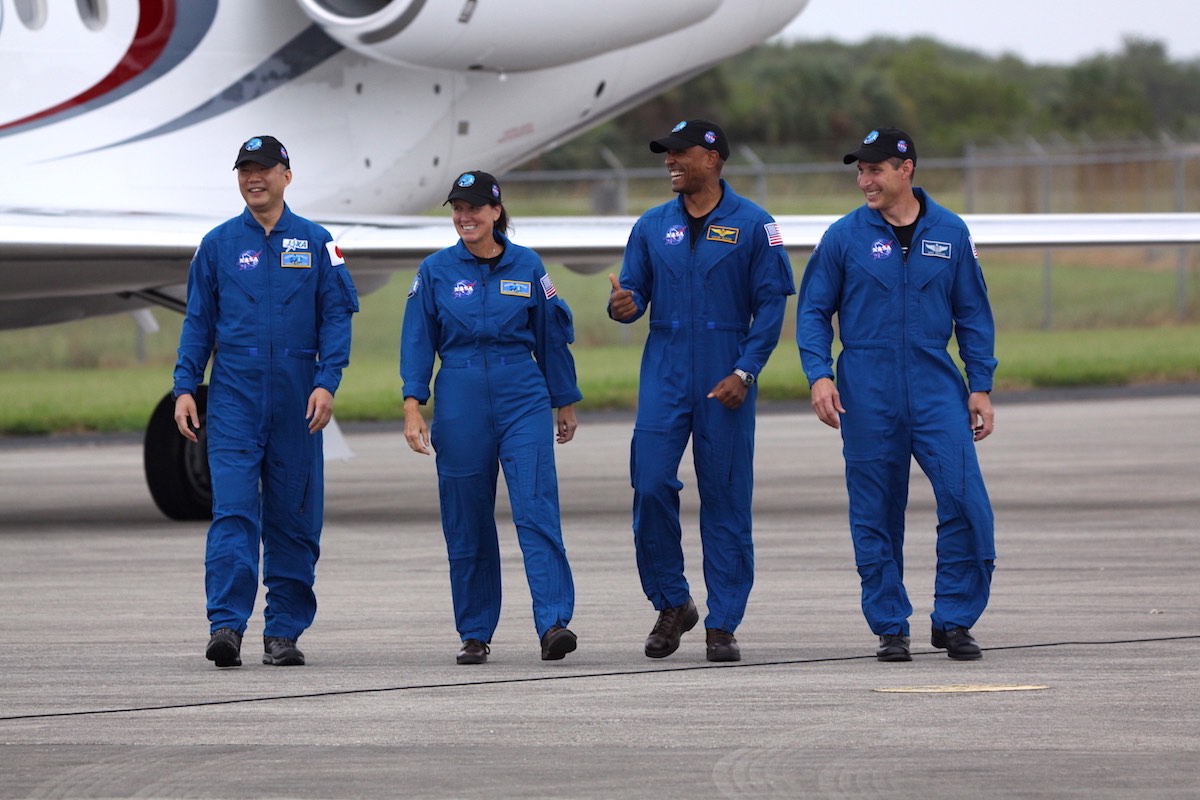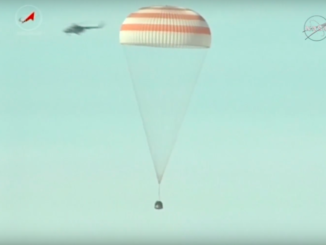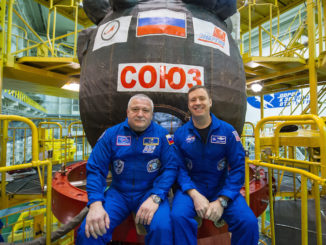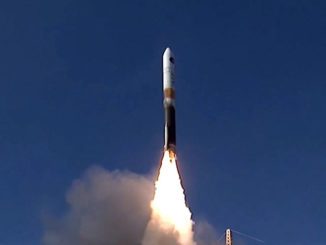
With eyes on Tropical Storm Eta approaching South Florida, the four astronauts set to launch next Saturday on a SpaceX Crew Dragon spacecraft arrived at NASA’s Kennedy Space Center on Sunday after flying from their home base in Houston.
Commander Mike Hopkins, pilot Victor Glover, mission specialists Shannon Walker, and Japanese astronaut Soichi Noguchi flew to Kennedy from Ellington Field near the Johnson Space Center in Houston. Their NASA-chartered jet touched down at Kennedy’s Launch and Landing Facility shortly before 2 p.m. EST (1900 GMT) Sunday.
Hopkins and his crewmates — now in quarantine to avoid exposure to illnesses such as COVID-19 — have finished the bulk of their training and will spend the next few days going over flight plans and trying on their SpaceX-made pressure suits. The crew will climb aboard the Crew Dragon spaceship — named “Resilience” — on launch pad 39A Wednesday during a pre-flight dress rehearsal.
“We flew an airplane into here, but the plan is for us to leave on top of a rocket, so thats pretty neat. Thats pretty awesome,” said Glover, a U.S Navy commander set to make his first trip into orbit. “Go Falcon, go Dragon, and go Resilience.”
“Good afternoon Florida. Good afternoon America. It feels really good to be here,” Hopkins said. “We’re ready … We’re starting this new era where we’re going to rotate crews to the International Space Station from American soil with our commercial partners like SpaceX. So we’re very excited to be a part of that.”
The Crew-1 mission set for launch Saturday at 7:49 p.m. EST (0049 GMT Sunday) from pad 39A will mark the first regular space station crew rotation flight with SpaceX’s Crew Dragon spacecraft, following a two-month test flight earlier this year that marked the first launch of astronauts into orbit from U.S. soil since the retirement of the space shuttle in 2011.
Long-duration crew members heading to the space station have exclusively launched on Russian Soyuz capsules for nearly a decade.
NASA has partnered with SpaceX and Boeing to develop new human-rated spaceships to ferry crews to and from the International Space Station.
While SpaceX is set to kick off its first “operational” crew rotation flight next weekend, Boeing continues working through software issues encountered an unpiloted test flight of its Starliner capsule last year. Another Starliner test flight without astronauts could take off in January, followed by a demonstration mission with a three-person crew later next year.
“Today, we are taking another big leap in this transformation in how we do human spaceflight,” said NASA Administrator Jim Bridenstine. “What we’re talking about here is the commercialization of space, where NASA is one customer of many customers in a very robust commercial marketplace in low Earth orbit.
“What we’re doing is we’re transitioning from a test flight to operational flights,” Bridenstine said Sunday. “Make no mistake, every flight is a test flight when it comes to space travel, but it’s also true that we need to routinely be able to go the International Space Station.”
Assuming the Crew Dragon blasts off Saturday night as scheduled, the Crew-1 astronauts will link up with the space station around eight-and-a-half hours later at 4:20 a.m. EST (0920 GMT) Sunday.
But gusty winds and rain bands from Tropical Storm Eta could hold up launch preparations on Florida’s Space Coast this week. The tropical storm is forecast to move across the Florida Keys overnight Sunday into Monday, then drift across the southeastern Gulf of Mexico before potentially moving toward the west coast of Florida late this week.
Hopkins said the Crew-1 astronauts will be following the weather forecast “very closely” this week.
“Clearly, it’s potentially going to have an impact,” Hopkins said.
High winds from the outer bands of Tropical Storm Eta forced United Launch Alliance to move an Atlas 5 rocket back into its hangar at Cape Canaveral on Friday, delaying the launch of a classified U.S. government spy satellite to no earlier than Wednesday.
SpaceX also delayed the rollout of the Falcon 9 rocket and Crew Dragon capsule to pad 39A until Monday, which pushed back a test-firing of the rocket’s nine Merlin 1D main engines on the launch pad from Monday night until Tuesday night.
“We’ll adapt, we’ll adjust, and we’ll be ready to go when the weather is ready as well,” Hopkins said.
Email the author.
Follow Stephen Clark on Twitter: @StephenClark1.



